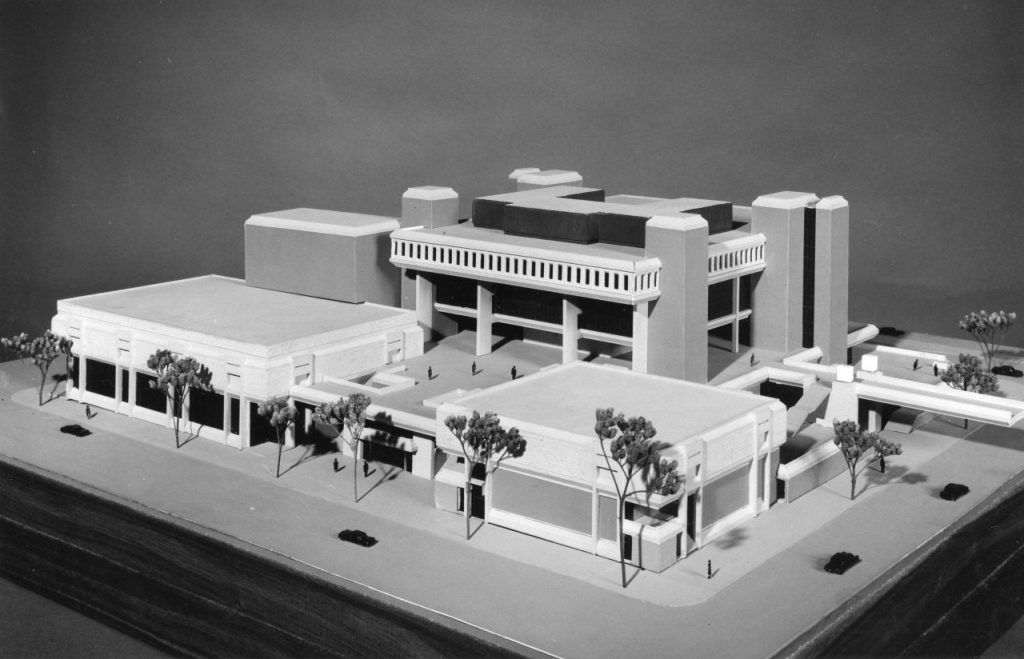
The roots of the Communication Arts Department are as old as the University itself. Originally called the Department of Public Speaking, it became the Department of Speech in 1920. Offices and classrooms were in Bascom Hall. The first MA degree in the United States in Speech was awarded at Wisconsin in 1920, the first PhD in 1922.
The Department was a member of the Northern Oratorial League, a debate society, and each year gave prizes for rhetorical excellence, the Frankenburger Awards, which still exist today. They are named in memory of “one of Wisconsin’s most beloved teachers” (Wisconsin Alumnus, 1929) David B. Frankenburger, who headed the forensics team from 1869 until his death in 1906. The UW Forensics team often took top honors in competitions.
Besides public speaking, the department also taught dramatic performance. It was the home of the Wisconsin University Players, who staged productions in the Bascom Hall Theater. In 1929 the Department of Speech took the student-run University Theater under its wing. This is where early cinema screenings were often held, along with numerous student theatrical productions.
The department took a lead in the new technology of radio broadcasting, working with UW’s pioneering radio station WHA and offering some of the first broadcasting courses in the nation. Speech Professor Henry L. Ewbank became Chairman of the University Radio Committee in 1928 and played a leadership role in radio programming and policy, at both the local and the national level. In 1939, his course on Radio Speaking was “one of the most popular courses offered on the Hill” (Wisconsin Alumnus, 1939).
By this time the Department of Speech boasted over 1300 students enrolled in its courses each year, up from 725 in 1932. This created a dilemma familiar to faculty today: as the Wisconsin Alumnus reported, “Classroom facilities continue to be taxed by the increased enrollment” (April 1932). The department’s roster of distinguished women faculty makes it stand out as well. Pioneering female faculty members included Professors Gertrude Johnson, Gladys L. Borchers, Harriett Grim, and Charlotte Wells.
Over the next decades, the Department of Speech maintained its broad spread, continuing to teach speech and theater as well as communicative disorders, and creating a new division of radio and television as those media expanded. In 1960, Department Chair Frederick Haberman headed the advisory committee that created the Mass Communications History Center, in cooperation with the School of Journalism and Mass Communication, the Department of History, and the Wisconsin Historical Society. Later that year the Wisconsin Center for Film and Theater Research was formed. Together these research centers build up one of the most important media and performing arts archival collections in the United States.
By 1966 it had become clear that a larger space was needed, and plans for a new Communication Arts building were announced, intended to house departments of Speech and Journalism, along with the university radio and TV stations. Plans were approved in 1969 and construction began on the $9.5 million project. Named after former Board of Regents member and US Senator William Freeman Vilas, whose legacy helped to fund it, Vilas Hall was completed in February 1972.
The Department of Communication Arts, as it had renamed itself in 1970, moved in on the 6th floor, with the School of Journalism and Mass Communication on the 5th floor and WHA radio and TV on the 7th. Studios, classrooms, theaters, and lab space took up the lower levels. In 1973, as faculty and enrollments grew, the Department of Theater and Drama broke off from Communication Arts to form its own unit, as had Communicative Disorders in 1967.
By the 1980s, the Department had consolidated its four areas of expertise: Rhetoric (now Rhetoric, Politics, & Culture), Communication Science, Film, and what was then called Telecommunications (now Media and Cultural Studies), combined into two undergraduate tracks: Rhetoric and Communication Science, and Radio-TV-Film. It has stayed about the same size in terms of faculty as it was in the 70s, though its student numbers have increased.
Comm Arts graduates work in a wide sector of industries and professions; many have achieved notable success (see our Communication Arts Partners page). Over the years, books and scholarly research produced by members of the faculty and former graduate students have helped to define the field of communication study, not only in the US but around the world.
Moving into the 21st century, the department continues to innovate to keep up with the constantly evolving field of communication. See our listing of courses for current offerings.